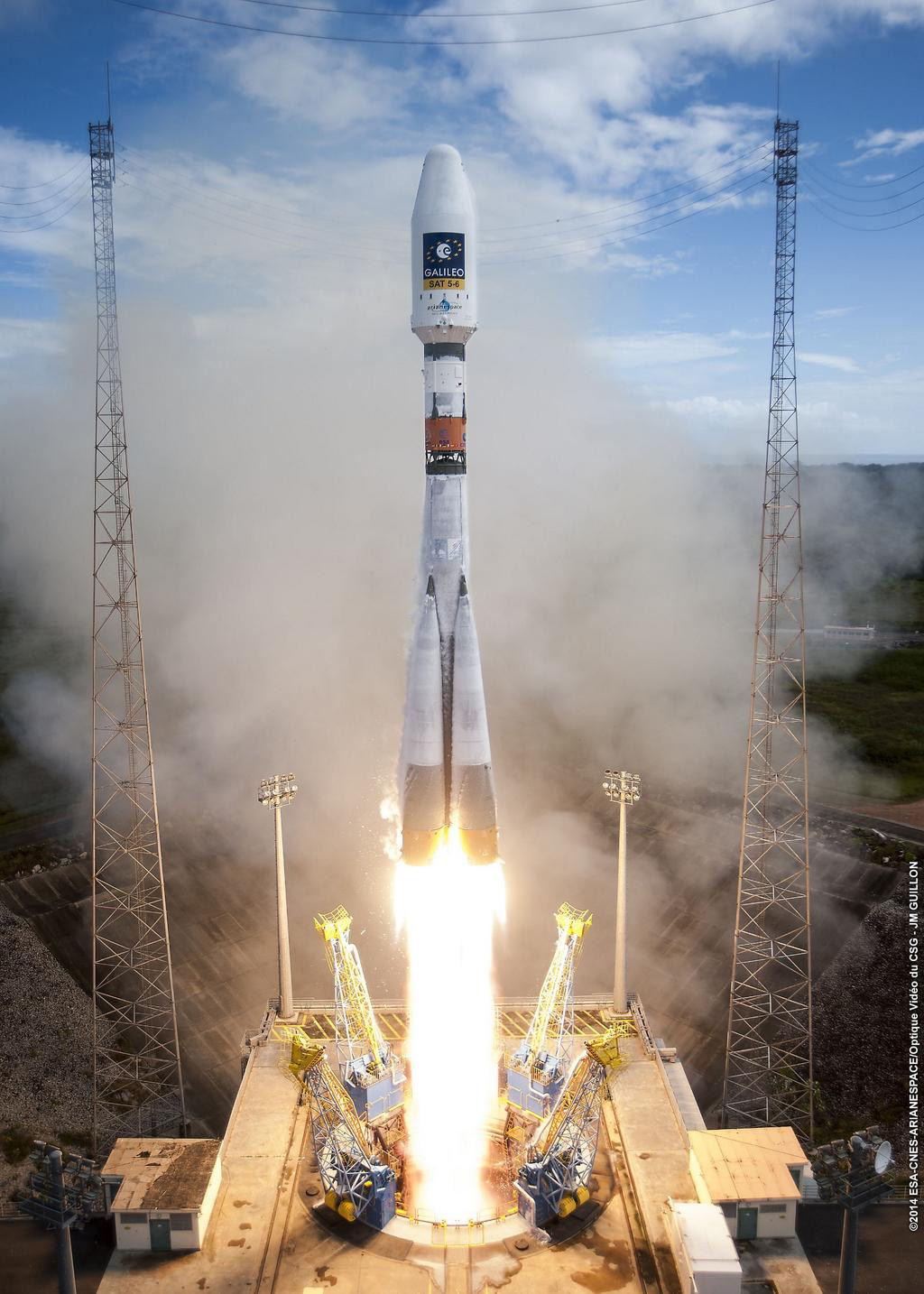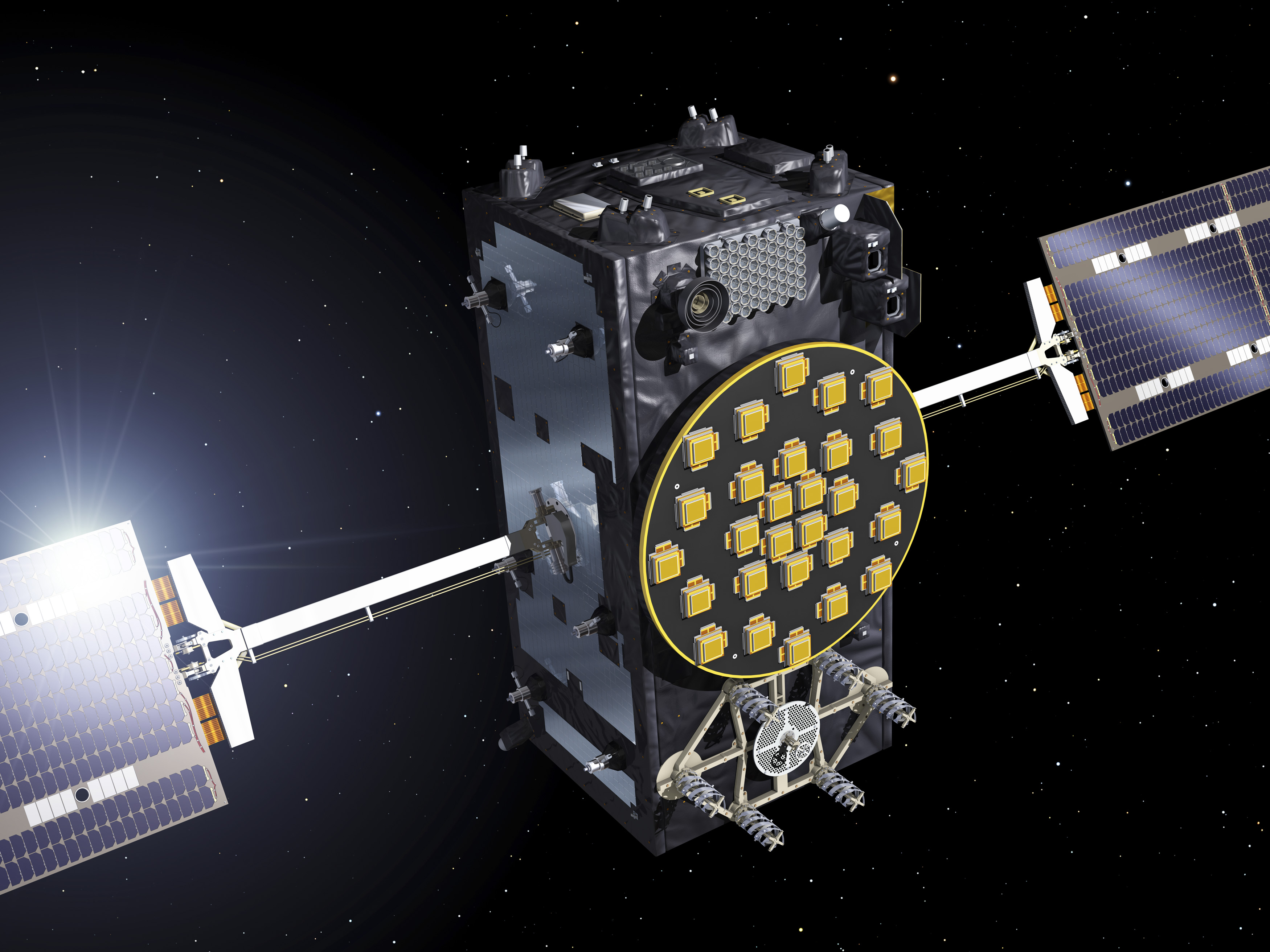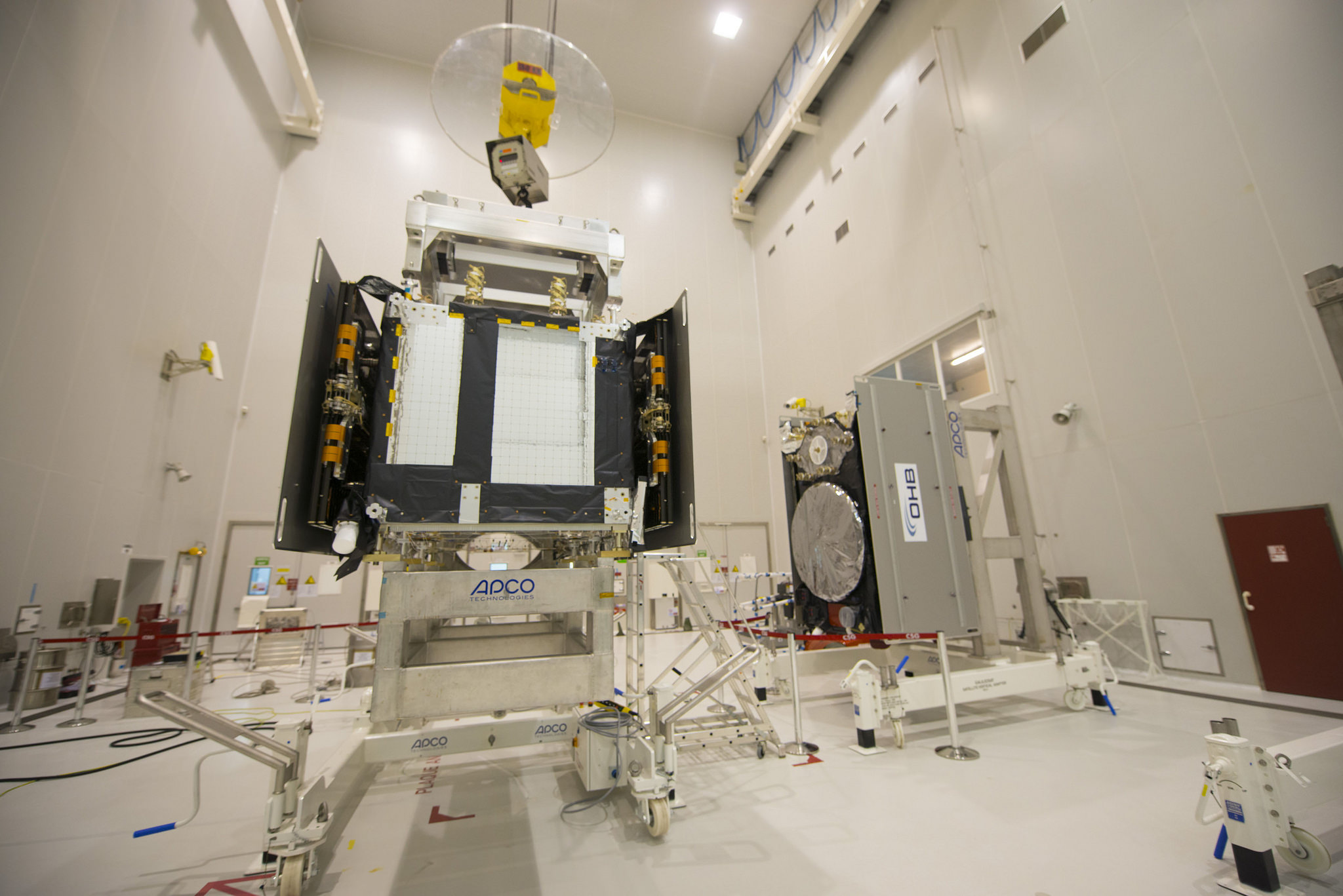Russian Rocket Launches European Navigation Satellites Into Wrong Orbit
The launch service provider Arianespace confirmed late Friday (Aug. 22) that two satellites for Europe's Galileo navigation network were released into the wrong orbit after launching aboard a Soyuz rocket from French Guiana.
It was not immediately clear whether the two satellites have enough fuel to make up for the orbit injection error.
Arianespace and European Space Agency officials initially heralded Friday morning's launch as a success, declaring the satellites healthy and claiming they were deployed into their targeted orbit approximately 23,500 kilometers, or 14,600 miles, above Earth.
The Russian-built Soyuz ST-B rocket carrying the Galileo navigation payloads blasted off at 8:27 a.m. EDT (1227 GMT) from the French-run Guiana Space Center in South America. The Soyuz launcher's three booster stages gave way to a Russian Fregat-MT upper stage less than 10 minutes after liftoff.
The Fregat was programmed to fire two times to propel the Galileo satellites into a circular medium Earth orbit tilted at an angle of 55 degrees to the equator.

But U.S. military orbital tracking data indicated the satellites were flying in a lower orbit than planned. Officials confirmed a launch anomaly in a statement late Friday.
"Complementary observations gathered after separation of the Galileo FOC M1 satellites on Soyuz Flight VS09 have highlighted a discrepancy between targeted and reached orbit," Arianespace, the French launch services company, said in a statement. [From Spaceflight Now: Europe's Galileo Satellites Set to Soar]
Get the Space.com Newsletter
Breaking space news, the latest updates on rocket launches, skywatching events and more!
Arianespace said investigations into the launch anomaly are underway and more information will be provided after a flight data analysis to be completed Saturday.
Orbital data from the U.S. Air Force showed three objects in an orbit with a low point around 13,700 kilometers -- about 8,500 miles -- above Earth. The objects are in an orbit with an inclination of 49.7 degrees, according to Jonathan McDowell, an astrophysicist at Harvard-Smithsonian Center for Astrophysics who tracks global satellite and launch activity.
Russian ground crews manage hands-on Soyuz launch preparations and the final countdown from a control center near the launch pad on the northwestern frontier of the Guiana Space Center, which is also home to Europe's Ariane 5 and Vega rockets.
But Arianespace has final authority for Soyuz missions taking off from French Guiana. Friday's liftoff was the ninth time a Soyuz rocket has launched from the tropical spaceport since beginning operations there in 2011.
It was also the first flight of fully operational Galileo navigation satellites, beginning a rapid-fire series of launches by Soyuz and Ariane 5 rockets to build out Europe's civilian-run counterpart to the U.S. Air Force's Global Positioning System.

The $7.2 billion Galileo network will consist of 30 satellites when complete. At least 24 satellites are needed for independent global navigation coverage, plus spares.
Before Friday's launch, ESA officials said two more Galileo satellites were being prepared for liftoff on another Soyuz launcher in December. Another eight spacecraft were on track for launches on Soyuz or Ariane 5 rockets next year.
Didier Faivre, ESA's director of navigation programs, announced ground controllers received signals from the Galileo satellites after the launch, verifying they were alive after the ride into orbit.
The satellites were programmed to automatically deploy their solar panels and begin charging their batteries later Friday. [How Europe's Galileo Navigation Satellites Will Work (Video)]
ESA acts as a technical agent for the Galileo system on behalf of the European Commission, the executive body of the 28-nation European Union.
Before Friday's launch anomaly, officials expected the satellites to be operational by mid-November, joining four other Galileo demonstration satellites launched in 2011 and 2012 to expand the constellation to six spacecraft.
The satellites launched Friday were the first of 22 spacecraft built by OHB System of Bremen, Germany, to reach space.
The European Commission and ESA ordered the 22 satellites in two batches. The satellites on Friday's Soyuz launch were purchased in 2010 as part of a 566 million euro contract. Each spacecraft is worth about 40 million euros, or $53 million, under the deal.
At the same time as its selection of OHB to build the first set of operational Galileo satellites, the European Commission finalized a contract with Arianespace for five Soyuz launches to send up two spacecraft at a time.
The launch contract was worth 397 million euros -- about $525 million, or $105 million per flight.
European officials and Arianespace signed another launch contract Wednesday to deploy the other 12 OHB-built Galileo satellites on three Ariane 5 rockets, beginning as soon as next year.
The European Commission and ESA have launched or contracted for 26 Galileo satellites. With Friday's launch, 20 more satellites are on the ground in various states of assembly and testing for launches over the next three years.

In a conference call with journalists earlier this week, Faivre said the European Commission and ESA decided not to purchase insurance for the Galileo satellites.
"This is basically due to the fact that we have 22 satellites on the production floor," Faivre said. "Also, we have many launches. We are, in a way, self-insured due to our procurement process. We prefer to invest in hardware or launch services than to go into the insurance market. If something goes wrong, we use spares.
"We need 24 satellites to get the full performance," Faivre said. "We intend to procure 30 and to launch 30."
The satellites launched Friday were supposed to inaugurate the operational phase of the Galileo program. Called "Full Operational Capability" satellites, they carry navigation payloads supplied by Surrey Satellite Technology Ltd. of the United Kingdom.
The satellites were designed to broadcast signals on three L-band frequency bands. The 10 signals are tailored for the global public, European law enforcement and security services, commercial users and search-and-rescue applications.
Follow Stephen Clark on Twitter @StephenClark1. Copyright 2014 Spaceflightnow.com, all rights reserved.

Join our Space Forums to keep talking space on the latest missions, night sky and more! And if you have a news tip, correction or comment, let us know at: community@space.com.
Stephen Clark is the Editor of Spaceflight Now, a web-based publication dedicated to covering rocket launches, human spaceflight and exploration. He joined the Spaceflight Now team in 2009 and previously wrote as a senior reporter with the Daily Texan. You can follow Stephen's latest project at SpaceflightNow.com and on Twitter.










